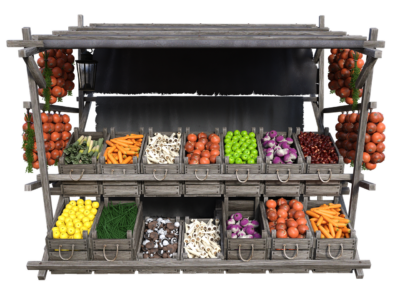A Guide to Properly Storing Your Garden’s Bounty
In this Article...
Fruits, Vegetables, and Herbs
When the harvest season is in full swing, it’s crucial to know how to store your garden’s abundance properly. Proper storage ensures that you can enjoy the flavours of your hard work for an extended period. In this guide, we’ll explore the best practices for storing different fruits, vegetables, and herbs, helping you maintain their freshness and flavour. Let’s dive in and discover the secrets of successful storage!
Storing Fruits:
a) Apples: Keep them in a cool, dark place, such as a cellar or refrigerator, to slow down the ripening process. Store them separately from other fruits and vegetables as they release ethylene gas, which can cause premature spoilage.
b) Berries: Remove any damaged or overripe berries before storing. Place them in a single layer on a paper towel-lined container in the refrigerator. Avoid washing until ready to use.
c) Citrus Fruits: Store oranges, lemons, and other citrus fruits at room temperature. They can last for several weeks if kept in a well-ventilated area away from direct sunlight.
d) Stone Fruits: Peaches, plums, and nectarines should be ripened at room temperature and then stored in the refrigerator to maintain their flavour and texture.
Storing Vegetables:
a) Root Vegetables: Remove the tops of root vegetables like carrots and beets to prevent moisture loss. Place them in perforated plastic bags or containers filled with damp sand or sawdust. Store them in a cool, dark place.
b) Leafy Greens: Remove any damaged leaves and wash thoroughly. Wrap them in a paper towel and store them in a plastic bag with some air circulation in the refrigerator’s crisper drawer.
c) Potatoes and Onions: Keep potatoes in a cool, dry, and dark location, away from onions. Store onions in a cool, dry place with good ventilation to prevent mould formation.
d) Tomatoes: Store them at room temperature until fully ripe, then transfer them to the refrigerator to extend their shelf life. However, keep in mind that refrigeration can affect the texture and flavour.
Storing Herbs:
a) Drying Herbs: Tie small bunches of herbs with twine and hang them upside down in a well-ventilated area away from direct sunlight. Once fully dry, store them in airtight containers or jars away from heat and light.
b) Freezing Herbs: Chop fresh herbs and place them in ice cube trays, filling each compartment with water or olive oil. Once frozen, transfer the herb cubes to a freezer bag or airtight container for long-term storage.
c) Storing Fresh Herbs: Treat herbs like fresh flowers by placing them in a glass of water, similar to a bouquet. Cover loosely with a plastic bag and store in the refrigerator.
Proper storage techniques are key to preserving the freshness and flavour of your garden’s harvest. By following these guidelines for storing fruits, vegetables, and herbs, you can extend their shelf life and continue to enjoy their deliciousness long after the harvest season. Experiment with different storage methods and find what works best for each type of produce. So, stock up on your favourites, follow these tips, and savour the taste of your homegrown delights all year round! Remember, the quality of your storage containers and the conditions in which you store your produce play crucial roles in maintaining freshness. Keep monitoring your stored items for any signs of spoilage, and use the ripest produce first to minimise waste. Happy storing and enjoy the fruits of your gardening labour!



